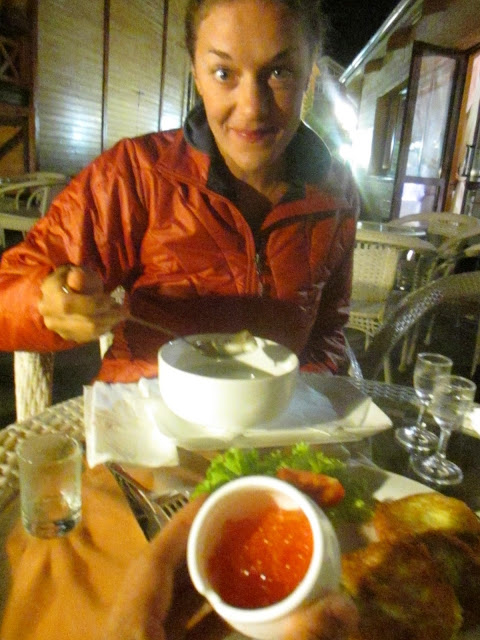 |
| Irkutsk Station (after a 51 hour train ride from Yekaterinburg) |
 |
| The town of Listvyanka and Lake Baikal. |
 |
| We arrived just as the sun was setting! |
 |
| Omul, a whitefish, is indigenous to Lake Baikal. It was the basis for nearly every dish of the best meal we had in ALL of Russia. By the way, that is caviar in the foreground! |
 |
| I am following the tradition of greeting the lake. |
 |
| Lake Baikal is the largest freshwater late...in the world. The Caspian Sea, although a larger "lake", is saltwater. |
 |
| Lake Baikal is formed at the location where two continental plates are separating. The geology major in me LOVES dioramas like this one! |
 |
| And as you might expect....lots of earthquakes. |
 |
| The lake, as you can see is DEEP, and contains 20% of all freshwater reserves in the entire world. |
 |
| NERPA!! (say it, it's fun!) These are the only freshwater seals found in the world...and they are here in Lake Baikal. |
 |
| The lake is 600km long and only 40km wide. Here we are looking east across the lake. Alas, it would have been that much better had it not been a bit overcast. |
 |
| The Angara River is the only OUTLET for the lake. There are thousands of rivers and creeks that flow into the lake, but only one river out. |
 |
| D and I hoped to go swimming in the lake, but no sun. We opted for a boat ride instead. |
 |
| A chapel |
 |
| The inside of a schoolhouse. |
 |
| The following are pictures of a typical 18th century home. This is how Siberians lived. |
 |
| The exterior of a hot house. |
 |
| The hot house interior. |
 |
| Skins like there were used to keep warm, but these days....for sledding. |
 |
| They really do build these structures like Lincoln Logs |
 |
| The Buryats were the indigenous people of the area and they did live in Yurts. |
 |
| Lastly, some Russian shopping pictures as we were stocking up for the 59 hour train ride. Beer sold in bottles of 2.5 liters. |
 |
| What do you think they are selling here? |







1 comment:
Fascinating info on Lake Baikal. Thank you!
Post a Comment